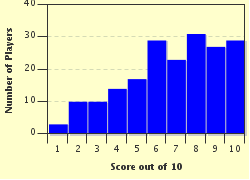Quiz Answer Key and Fun Facts
1. I was the leader of the Nez Perce. By a treaty in 1855 our lands were 7.7 million acres in what is now Idaho, Washington, and Oregon. But the settlers and military moved in and that treaty was broken, as was the 1863 treaty that reduced our lands to 780,000 acres. I was a man of peace and a humanitarian but was forced to defend my people and lands. Even my appeal to President Rutherford B. Hayes in 1879 fell on deaf ears. What was my name?
2. My name is the same as my father's and his father's, and I am of the Oglala Lakota. As a military strategist, I am regarded as one of the best. In 1866 with six decoy riders and some Cheyenne women, I lured an army of troops into an ambush, resulting in 1,000 deaths. It is called the Fetterman Massacre. Later, I participated and helped plan the most famous defeat of the Indian Wars--The Battle of the Little Big Horn. What was my name?
3. I was of the Pima tribe of Arizona and my Indian name was Falling Cloud. I was educated in the Federal Indian School at Phoenix. At nineteen I enlisted in the United States Marine Corps and was one of the men who raised the flag in the famous photo on Iwo Jima. By what name am I known?
4. My father was a full-blooded Cherokee and my mother, although Caucasian, was culturally a Cherokee. In a government seizure of land my family was forced to relocate from our native Oklahoma to San Francisco. I married young and had two daughters but I managed a degree from San Francisco State University. There I became interested in Indian affairs and became in 1985 the Principal Chief of the Cherokee Nation. What is my name?
5. I grew up in the Sac and Fox Tribe culture in 1888 and became one the most versatile athletes ever. Carlisle Indian Industrial School was set up to integrate Indians into the dominant culture. There I excelled in every sport--football, basketball and baseball. In 1912 I won two gold medals at the Olympics in the pentathlon and decathlon. Do you remember me?
6. I was born of Cherokee heritage in the Indian Territory of Oklahoma. In my lifetime I was a cowboy, a comedian, a humorist, a social commentator, a vaudeville performer, and an actor. I once said that I made jokes about every prominent man of my time, but I never met a man I didn't like. I even ran for President on the Anti-Bunk Party, promising to resign if elected. Who was I, who died in a plane crash in 1935?
7. I am of the Oglala Sioux and an activist. I was not the founder of AIM (American Indian Movement) but perhaps is its most recognizable leader. I have supplemented my activist career with acting roles and writing. I published my autobiography in 1997 "Where White Men Fear to Tread". Do you know who I am?
8. I was of the Shoshone tribe and at age 16 I joined along with my husband the great western exploration lead by Lewis and Clark. Although I was hired as a guide and interpreter, my main value was as an Indian woman with child which emphasized the peaceful intent of the mission. After the expedition I settled in Saint Louis, Missouri where I died in 1812 at the age of 24. Do you remember me?
9. My name is Charles Curtis. I grew up in the Kaw territory in what is now Kansas before it was a state. I also have Osage and Pottawatomie ancestry. During my political career I served in the House of Representatives and the United States Senate. Under what President did I serve as Vice President of the United States?
10. In 1975 two federal agents entered the compound at Oglala on the Pine Ridge Reservation. An exchange of gunfire ensued. The two agents were found dead and three members of AIM (American Indian Movement) were arrested and charged with murder. Two were acquitted but I had sought refuge in Canada as I did not believe I could get a fair trial. When I was extradited for trial, I was convicted and sentenced to two life sentences. Many consider my trial a miscarriage of justice and me to be a political prisoner. What is my name?
Source: Author
Rehaberpro
This quiz was reviewed by FunTrivia editor
bloomsby before going online.
Any errors found in FunTrivia content are routinely corrected through our feedback system.


